
Defects Of Vision And Their Corrections
Human Eye And Colourful World of Class 10
Defects Of Vision And Their Corrections
The ability to see is called vision. Sometimes the eye may gradually lose its power of accommodation. As a result, the eye of a person cannot focus the image of an object on the retina properly. In such cases, the vision of a person becomes blurred. As a result, he cannot see either the distant objects or nearby objects or both clearly and comfortably. The person is said to have defects of the eye. These defects of the eye are also known as the defects of vision or refractive defects of vision or the optical defects of the eye.
Following are the four common defects of vision:
- Myopia or short-sightedness
- Hypermetropia or long-sightedness
- Presbyopia
- Astigmatism
MYOPIA OR SHORT-SIGHTEDNESS:
Myopia or short-sightedness is also known as near-sightedness.
Myopia or near-sightedness is the defect of an eye due to which a person can see nearby objects clearly but he cannot see far away (distant) objects clearly and distinctly.
A person with this defect has the far point nearer than infinity.
In a myopic eye, the image of a distant object is formed in front of the retina and not at the retina as shown in the fig. (b)
Causes of Defect: The two possible causes of this defect are:-
- Excessive curvature of the eye lens or due to the high converging power of eye lens (short local length).
- Elongation of the eye ball.
Corrective Measures: This defect can be corrected by using spectacles with concave lens of suitable focal length or power as shown in the figure (c).
According to lens formula,
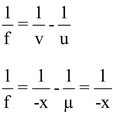
Therefore, f= -x where x is the far point of myopic eye and ∝ is the far point of normal eye.
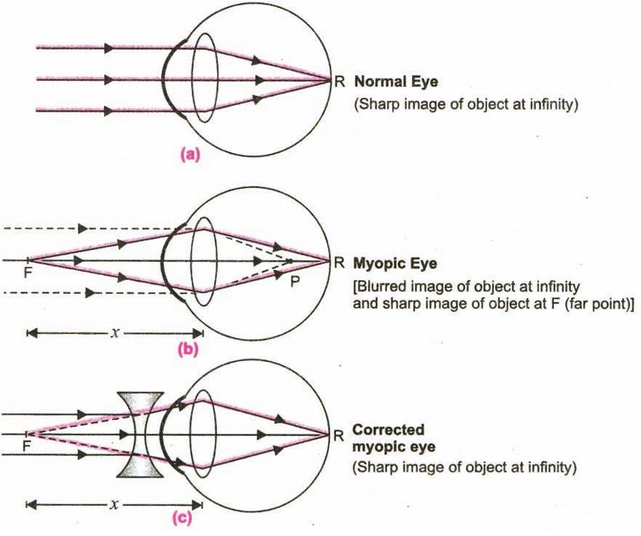
HYPERMETROPIA OR LONG-SIGHTEDNESS:
Hypermetropia or long-sightedness also known as far-sightedness, is the defect of an eye due to which a person can see far away (distant) objects clearly but cannot see nearby objects clearly and distinctly.
A person with this defect has the near point farther away from the normal point (25 cm).
In a hypermetropic eye the image of nearby object is formed behind the retina and not on the retina as shown in the figure (b).
Causes of Defect: The two possible causes of this defect are:-
- Low converging power of eye lens because of large local length.
- Eye-ball being too short (compressed).
Corrective Measures: This defect can be corrected by using spectacles with convex lens of suitable focal length or power as shown in the figure (c).
According to lens formula,
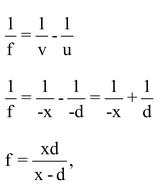
where x is near point of hypermetropic eye and d is the near point of normal eye.
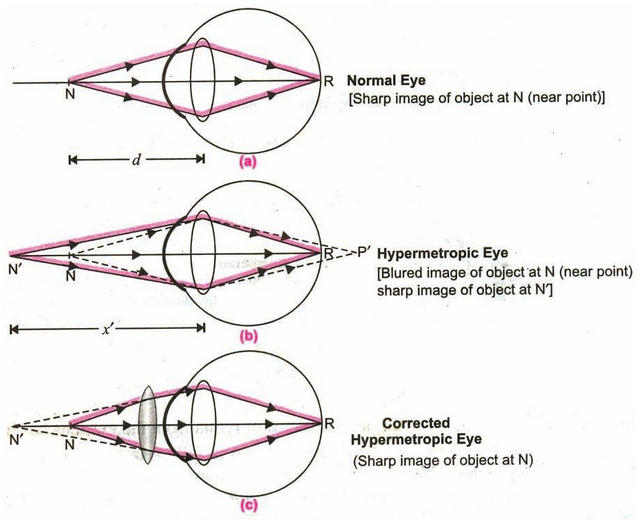
PRESBYOPIA OR OLD SIGHT:
Presbyopia or old sight is the defect of the eye due to which an old person cannot see the nearby objects clearly. The near point of the old person having presbyopia gradually recedes and becomes much more than 25 cm.
Cause of Defect: Presbyopia arises due to the gradual weakening of the ciliary muscles and diminishing flexibility of the eye lens with age.
Presbyopia is the hypermetropia caused by the loss of power of accommodation of the eye due to old age.
Corrective Measures: Presbyopia defect is corrected in the same way as hypermetropia i.e. by using spectacles having convex lenses.
Some times, a person may suffer from both myopia and hypermetropia. Such persons often use spectacles having bifocal lenses in which upper part consists of a concave lens to correct myopia (used for distinct vision) and lower part consists of a convex lens to correct hypermetropia (used for reading).
ASTIGMATISM:
The inability of the eye in focusing objects in both horizontal and vertical lines clearly is called astigmatism.

Normal Wire Gauge Wire Gauge with Wire Gauge with
Distorted Vertical Lines Distorted Horizontal Lines
Cause of defect: This defect is caused due to varying curvature in the eye lens in horizontal and vertical lines.
Corrective Measure: This defect is corrected by using cylindrical lenses.

Cylindrical lens
1. The far point of a myopic person is 80 cm in front of the eye. What is the nature and power of the lens required to correct the defect?
Solution: Object distance, u = ∞ (Infinity)
Image distance, v = – 80 cm (Far point, in front of lens)
Focal length, f = ?
Using lens formula:
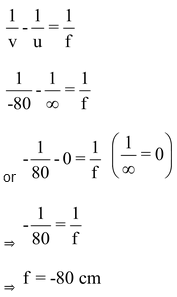
Thus, the focal length of the required concave lens is 80 cm.
To find power, we use
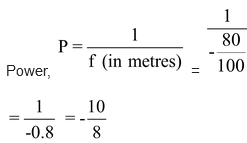
⇒ P = –1.25 D
Therefore, the power of concave lens required is, –1.25 dioptres.









